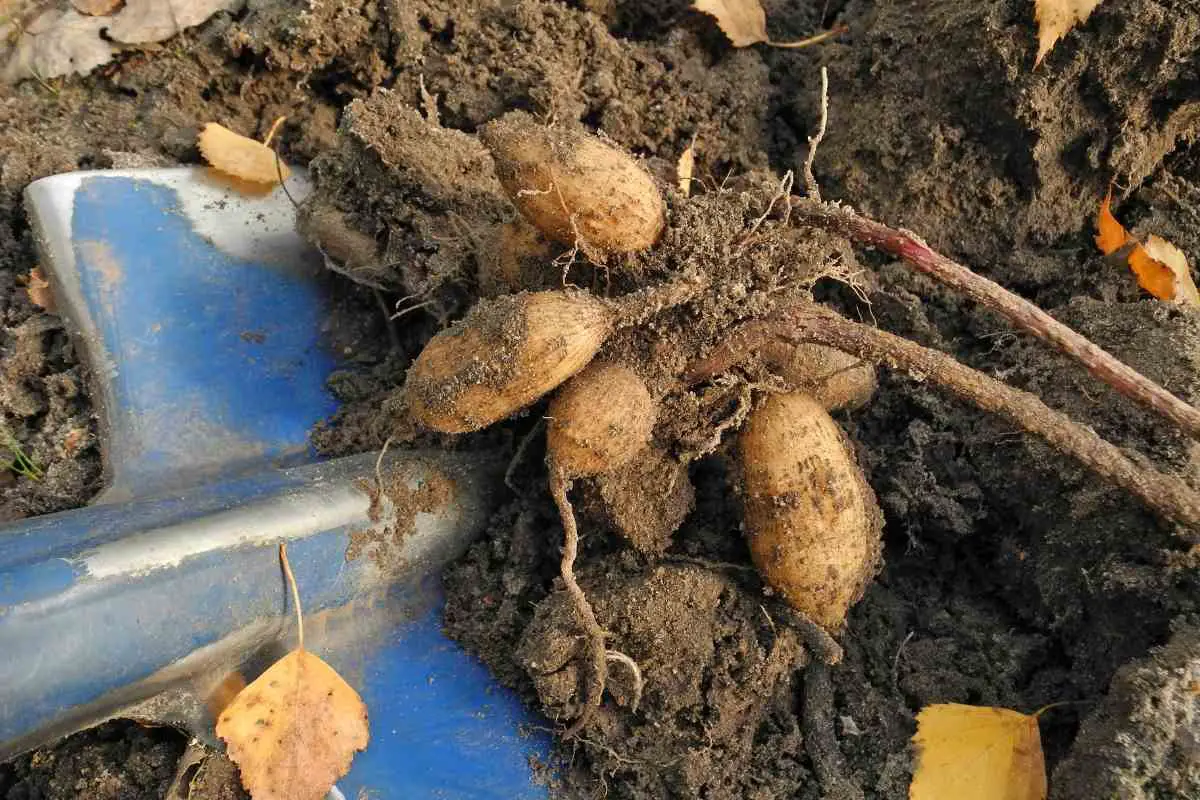Dahlia tubers are affected by freezing temperatures during winter.
If you live in regions that experience extreme winter, your dahlia tubers will probably rot and die. However, dahlias can survive winter if your area is a bit warm during winter.
If you live in zone 8-10, the winter temperatures are mild, so your dahlias can survive winter with little management.
In zone 7, you may leave the tubers in the ground if the winter temperatures do not fall below 20 degrees F.
Dahlias tubers in zone 3- 6 should be dug, stored in a warm place, and replanted in spring.
Can You Leave Dahlias In The Ground Over Winter?
Dahlias are lovely flowers that come in different sizes and colors.
Many homeowners love them due to their pleasant appearance. They are an excellent addition to your garden since they come in varying sizes and can match any gardening setup.
Dahlia tubers are affected by cold temperatures and will rot during winter if they are not removed and properly stored.

The tubers split and deteriorate in freezing temperatures. Therefore, it is best if the tubers are preserved during winter and replanted in spring.
However, the tubers may rot or dry out if they are not stored properly.
Since these flowering tubers are not cheap to buy and maintain, it is critical you take care of them, especially during storage.
The tubers are affected since the soil becomes too hard due to the freezing temperatures.
Conversely, if the soil is well drained, the tubers will survive in the ground over winter.
Essentially – Well-drained soils allow nutrients to penetrate the tubers. Also, frost will not harm the tubers since it cannot penetrate deep into well-drained soils.
To Uproot or Not To Uproot The Dahlia Tubers
Dahlia plants survive optimally in warm weather; their leaves, stems, and tubers will not withstand freezing temperatures.
The stems and flowers will turn black during the onset of frost in winter.
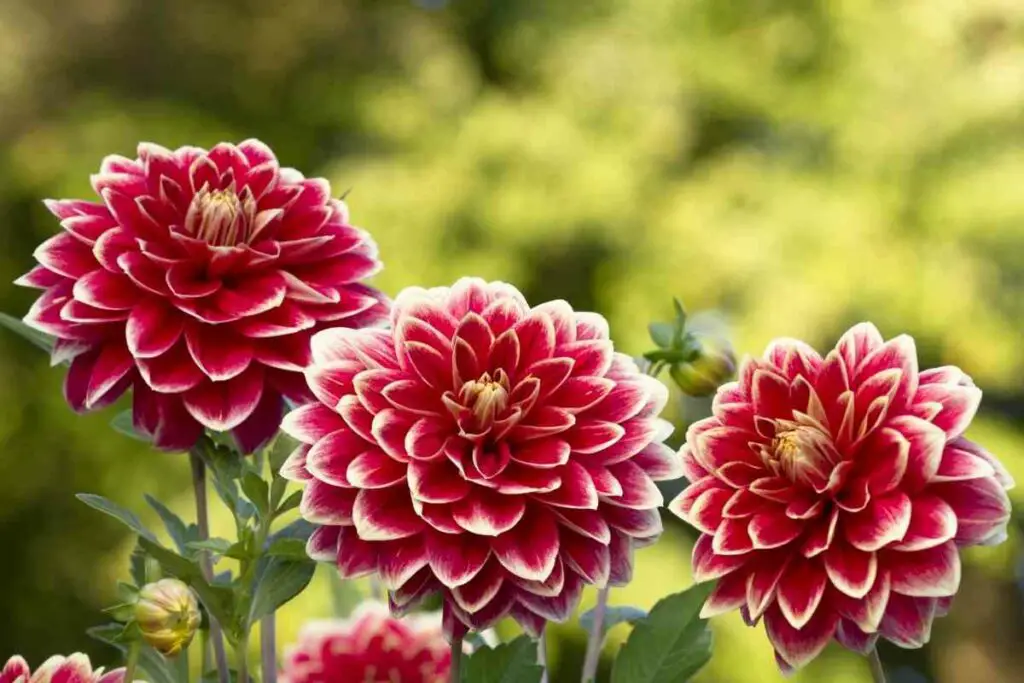
Although the plant may look dead, the bulbs are still alive since the soil is warm. The decision of whether to uproot the tubers or not depends on the winter temperatures of your region.
Winter temperatures of zones 8 to 10 are not very cold and rarely fall below 20 degrees F.
In these regions, you can leave your dahlia tubers in the ground and wait for them to sprout in spring. You can prune the stems a few inches above the ground and leave the bulbs in the soil.
The dahlia tubers will survive well in zone 7 regions if the soil is well drained. However, providing a little mulch on the soil will be essential to provide warmth.
If you do not want to risk your tubers rotting and dying, store them indoors at the proper temperatures.
Heads Up! Your dahlia tubers will not survive during winter if you live in zone 3 to 6. These zones experience freezing temperatures during winter.
Therefore, you need to prune the stems, dig up the tubers, and store them in nursery pots, preferably indoors with moderate temperatures.
When To Uproot The Dahlias
Since the flowers cannot withstand freezing temperatures, uproot and store the tubers if you live in such areas.
Plan in advance so that the tubers are not damaged by frost. The tubers are delicate and are easily destroyed by the frost.
The first frost in fall should be a wake-up call that your dahlia tubers should be dug.
Often, most vegetation at this time will be turning color and stems dying. The colorful dahlia plant will turn darker, and the stems will look frail and shrunken.
Uproot the tubers when the temperatures fall below 20 degrees F; the frost will kill the bulbs.
How To Uproot And Store
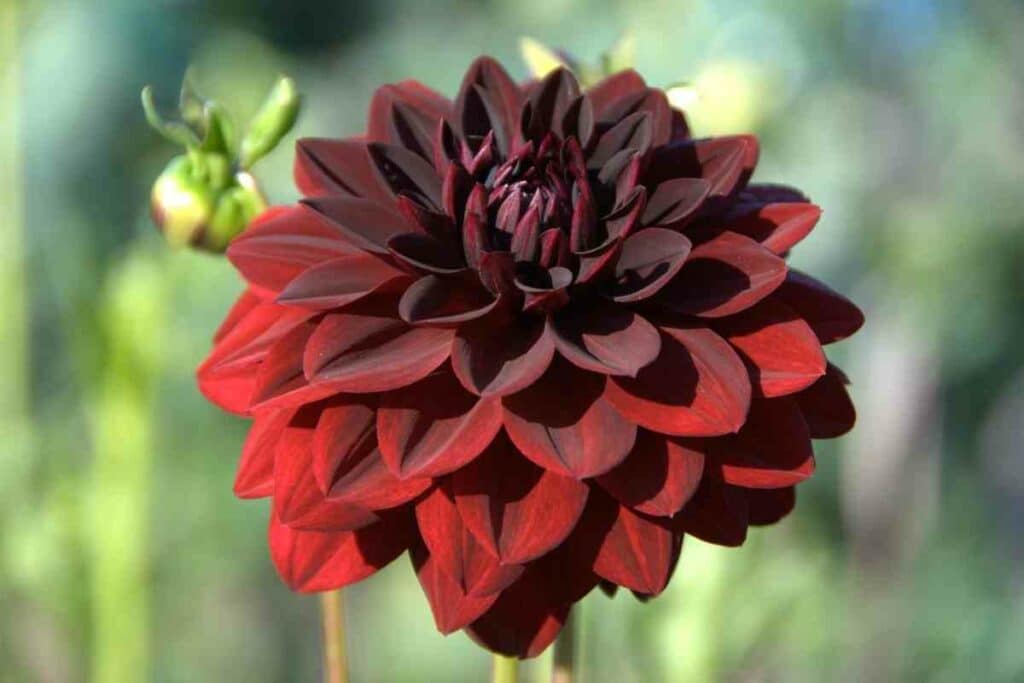
The following procedure should be used to uproot and store your tubers safely:
- Label the plants you want to store, keeping in mind the variety. Only save those varieties that are beautiful and healthy. Wear appropriate gear such as gloves to ensure you don’t get a frost burn.
- Leave the tubers in the ground for a week after the first frost hits. Essentially, this will strengthen them for storage. Cut the flower stems 4 inches above the ground and return the labels.
- Uproot the bulbs carefully using a garden fork or a shovel. Dig at least a foot away to avoid damaging the tubers. Some bulbs can be as deep as 16 inches. Therefore be gentle to prevent any cut to the tube to avoid rot.
- Let the tubers dry for two days. Avoid drying them in direct sunlight and do not expose them to frost. You can subdivide the tubers at this moment if you want to plant more bulbs in spring. Use a sharp knife to separate the bulbs at the intersections.
- Pack the tubers appropriately, ensuring not to damage them. For instance, you can plant the tubers in nursery pots and store them indoors. Also, you can use ventilated boxes or plastic bags, ensuring enough air circulation.
- Store the boxes, plastic bags, or garden pots in a cool place, ensuring that temperatures remain around 40-50 degrees F. More importantly, remember that any frozen tuber will not sprout.
Precautions When Packing The Tubers
Storing the tubers can be easy for those with the experience but can also be challenging. Importantly, avoid storing them in wet conditions since they will rot.
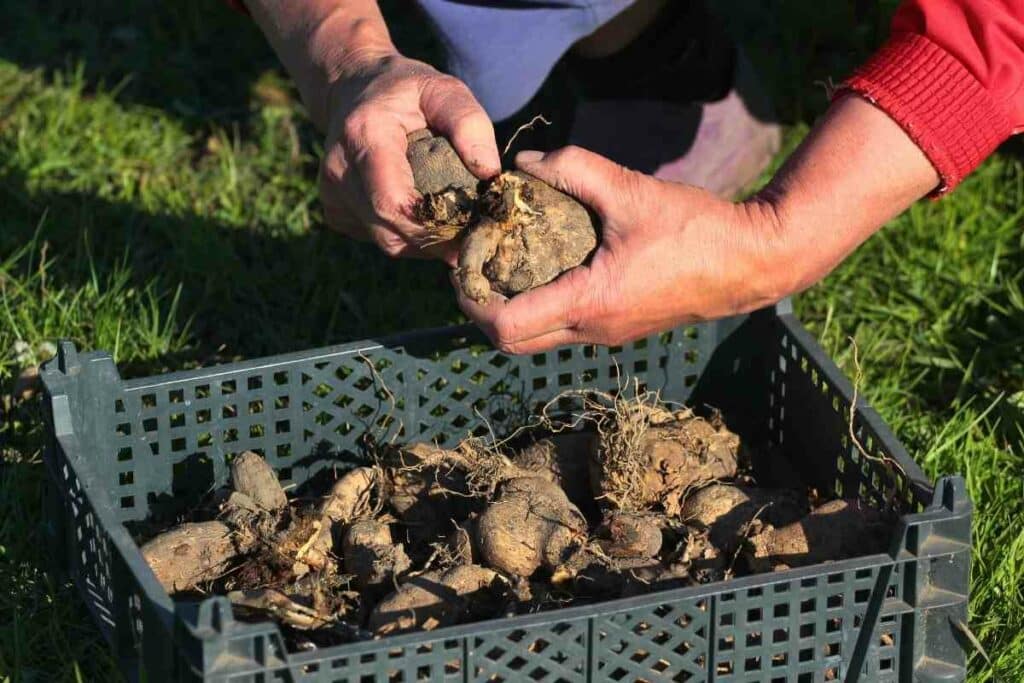
While some people achieve great success by just wrapping them in a paper bag, you might need to be more careful when packing the tubers.
Fill your cardboard box with sawdust, peat moss, or vermiculite for successful storage.
Also, ensure the individual bulbs are far from each other to avoid damage or rot. You can store the tubers in heated garages if you live in icy regions.
Also, check on the tubers regularly to ensure they don’t dry out or become too wet. Any moldy tuber should be discarded to avoid spreading to the rest of the tubers.
When And How To Replant The Tubers
Replant your tubers during the onset of spring.
You should not replant them directly outside your garden since the prevailing weather conditions may still be unpleasant.
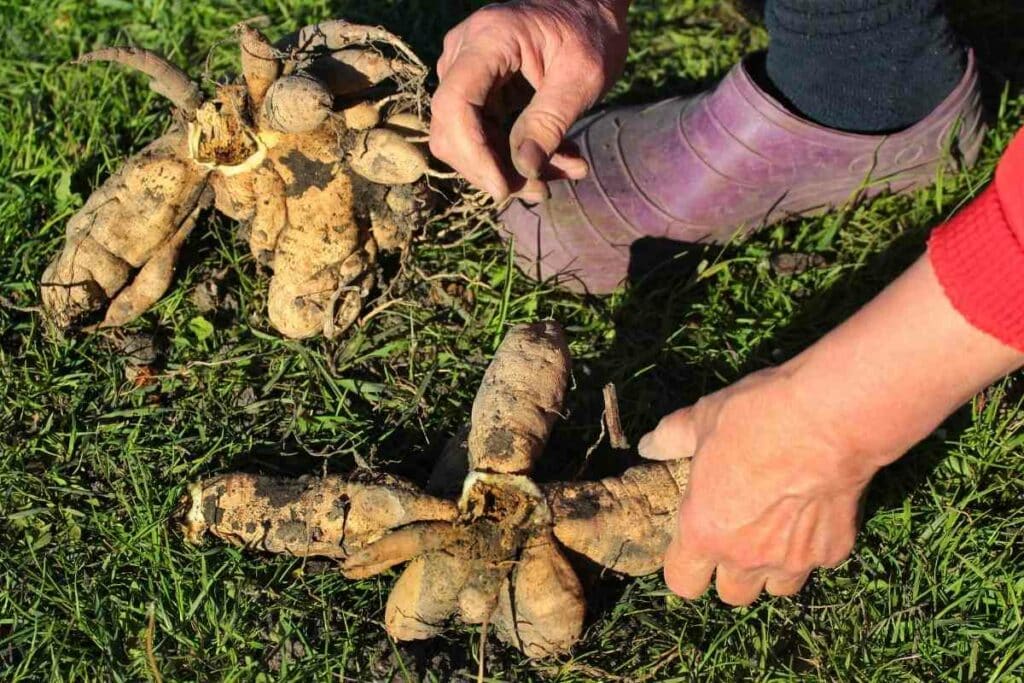
Instead, plant them in pots and keep them indoors for about two months before transplanting them outside in the garden.
The tubers should be planted 2 or 3 inches inside the potting soil. The soil should be moist but not wet to avoid rotting. Also, ensure to keep the temperatures warm above 65 degrees F.
The transporting holes should be about 6 inches deep since the tubers will be dipped 4 inches in the soil. Transplant the tubers only when you are sure there is no frost outside.
Dahlia tubers thrive in well-drained organic soils.
Therefore, can apply organic fertilizer in the holes before transplanting. If you don’t have an organic one, apply a small amount of DAP fertilizer.
The tubers should be appropriately watered to ensure the root system develops optimally.
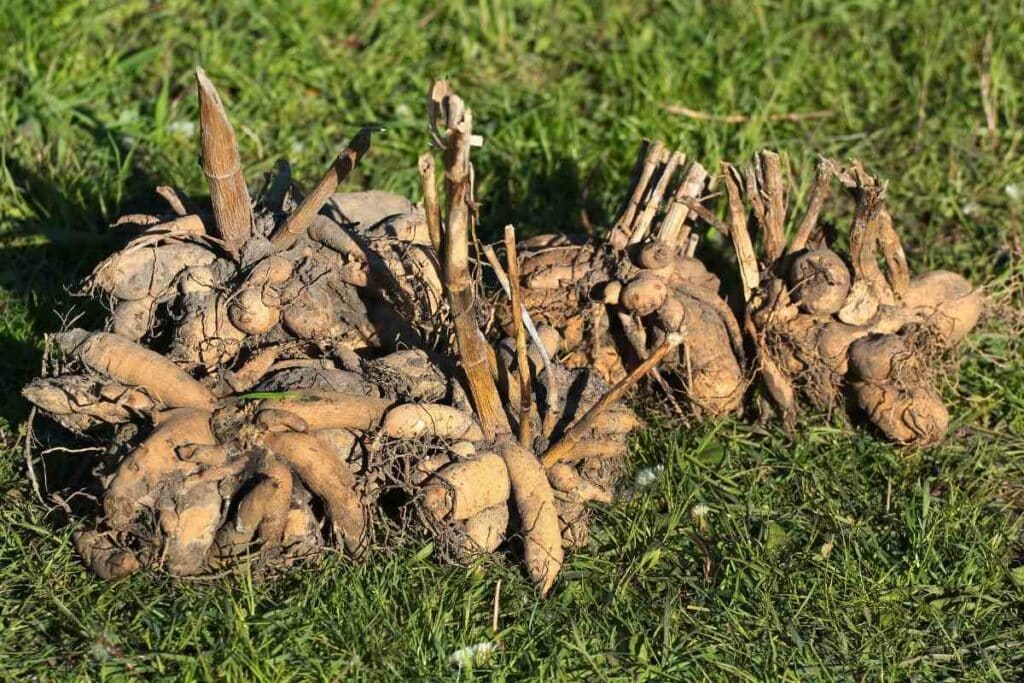
When sprouting begins, ensure the plant has adequate sunlight and shield it from winds. Strong winds can damage the delicate stems.
Final Thoughts
Dahlias are beautiful flower plants that make a garden stand out.
Growing these flowers is typically easy, especially in regions that experience temperate and warm climates. Also, they do well in seasonal temperatures throughout spring, summer, and fall.
Dahlias are delicate plants and cannot withstand freezing temperatures in winter. However, there is a solution to this inherent characteristic.
Those living in zones 3 to 6 should uproot and store the tubers throughout winter.
Ensure to take great care of tubers during storage by providing a favorable environment with the right warmth and moisture.
The tubers will sprout into dahlia plants when replanted in spring.
Dahlia plants are easy to grow when provided with the appropriate environment. Your garden will look beautiful during summer and fall when the flowers have blossomed.
